SGT. PEPPER’S LONELY HEARTS CLUB BAND
FIFTY YEARS ON
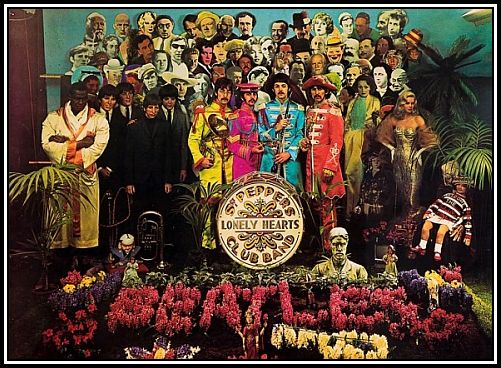 The Album was released in the U.K. on 26th May, 1967
The Album was released in the U.K. on 26th May, 1967


-oOo-
I remember the day well when The Beatles album, Sgt. Pepper’s Lonely Hearts Club Band, was released. I was in my second year of studies towards my Ph.D, in Carbohydrate Chemistry at the University of East Anglia (UEA) in Norwich, and London was in full swing and the world was on the verge of experiencing The Summer of Love.
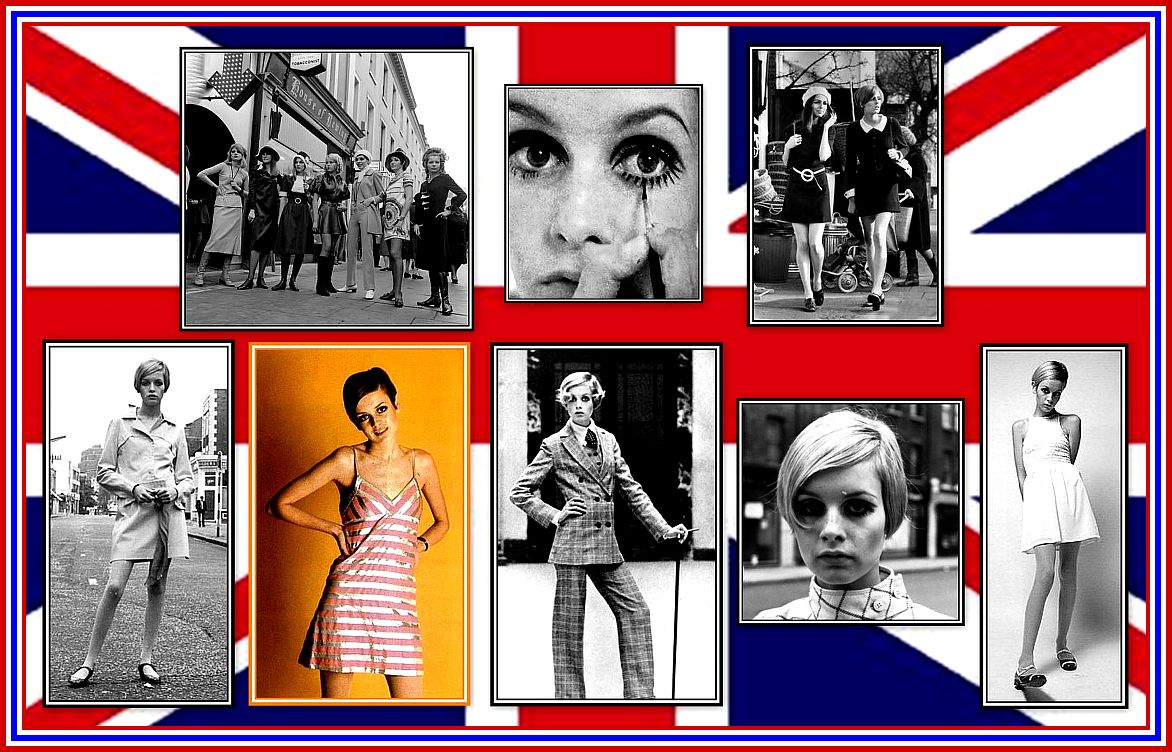 Swinging London, Dolly Birds & Twiggy (born 1949)
Swinging London, Dolly Birds & Twiggy (born 1949)
-oOo-
When UEA was founded in 1963, Earlham Hall, the erstwhile home of The Gurney Family which included Elizabeth Fry (1780-1845), prison reformer, became its Administrative Centre. Today, The Hall houses the University’s School of Law.
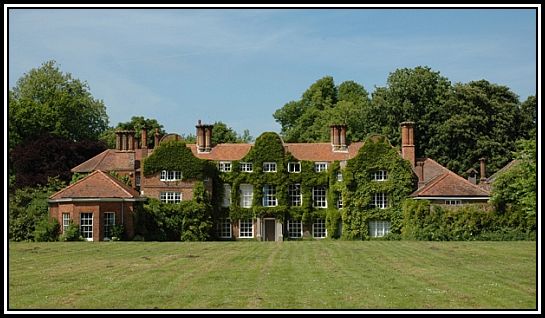 Earlham Hall
Earlham Hall
Today UEA covers a huge area and comprises a wide range of Schools and other buildings dedicated to Sport and The Arts. I attended the University from 1966 until 1968 in order to pursue my doctoral studies in the School of Chemical Sciences (now apparently known as the School of Chemistry). At that time, the campus was a huge building site with only a few concrete buildings completed. These buildings were designed in the Brutalist Style and were not pleasing to the eye. In addition, a series of Terrapins, which were temporary portable modular buildings, were dotted about what was laughingly known as The University Village. The Terrapins housed The Student Union, which seemed to be a Bar with limited opening hours and little else and a number of administrative offices.
 Views of the building that was once known as The School of Chemical Sciences
Views of the building that was once known as The School of Chemical Sciences
To say that the place was ugly was an understatement to say the least, especially when it rained, which it did often. The rain caused ugly streaks and stains on the concrete and also caused huge amounts of mud to be everywhere that oozed onto the pavements and roads from the vast amount of construction work that was going on.
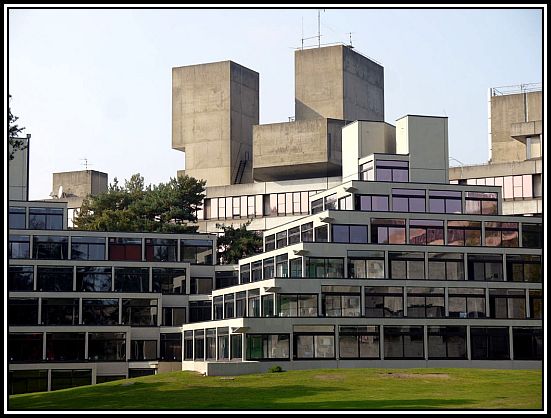 Student living quarters, known as Zuggurats, which were small and with paper-thin walls, which I have recently learned are now Grade II listed by English Heritage
Student living quarters, known as Zuggurats, which were small and with paper-thin walls, which I have recently learned are now Grade II listed by English Heritage
-oOo-
The weather of my first autumn and winter in Norwich was brutal, as it seemed to rain every single day. We also had to contend with high winds which cut through you like a knife. These gale-force and chilling winds seemed to blow constantly across the flat lands of Norfolk during that year. I liked to think that these winds began in The Urals Mountains in Russia and had gained velocity and chill, as they swept across Europe!
To add to my gloom and despair at being in such a miserable place was the feeling of isolation I felt each evening at 9.35 p.m. This was when the last train to London’s Liverpool Street Station pulled out of Norwich Station leaving me knowing that there was no way out of this place until 8.05 a.m. on the next day!
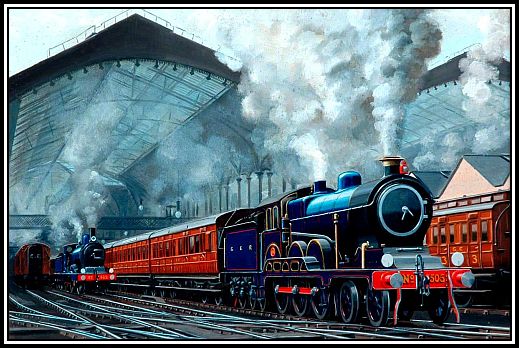 Last Train to London
Last Train to London
-oOo-
The final indignity to add to my misery during my first year at UEA came from having to share a laboratory that had no windows and which was hidden away on the eighth floor of the School of Chemical Sciences with a group of others, known by me as The Ten, who were not exactly kindred spirits.
-oOo-
 Students in an Organic Chemistry Laboratory – Note: No Windows!
Students in an Organic Chemistry Laboratory – Note: No Windows!
We, The Ten and I, were tucked away in a laboratory that had originally been intended for the performance of experiments with dangerous chemicals i.e. those that risked exploding! But since, we, The Ten, were not part of the major research thrust of The School of Chemical Sciences, which was Heterocyclic Chemistry, and I especially, doing research in Carbohydrate Chemistry, were made to take the elevator up to the fifth floor and then climb three additional flights up to our Roof Top Laboratory. This proved most annoying especially when one had to carry dangerous chemicals from the second floor where the Quartermasters’ Stores was up to our laboratory.
Although Carbohydrates are technically Heterocyclic Compounds, they are sufficiently different to other compounds of this class and so did not fit in with the Head of Department’s idea as to what such compounds were. Hence the relegation to the Roof Top Laboratory!
 Equipment used in Organic Chemistry Experiments
Equipment used in Organic Chemistry Experiments
Left: Heating under reflux; Top Right: Simple Distillation; Top Left: Fractional Distillation
-oOo-
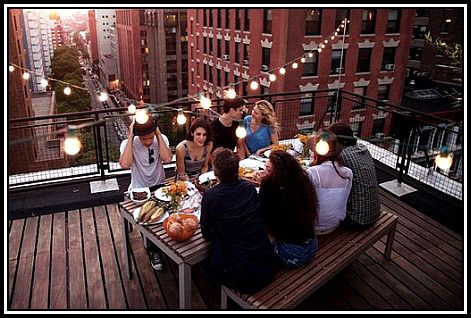 Young people enjoying a feast on the roof
Young people enjoying a feast on the roof
Eventually I found a few friends working on lower floors who were also less than emanated with UEA and with whom I used to hold feasts in my high-up laboratory featuring delicious delicacies that we had cooked in the laboratory itself. I remember on one occasion on a day after a feast, my advisor came up to the laboratory and noted that the place smelled of roasted meat. Had he arrived one day earlier, he would have found me and my chums on the roof seated at a large table that we had carried up from the fifth floor happily noshing on roast lamb, roast potatoes, broccoli and carrots and washing it down with a reasonable Bordeaux. The Entrée that day was followed by Apple Crumble and Custard. Cheese and biscuits together with coffee were also served. The whole feast was prepared in the laboratory and cooked in and on the equipment provided by The School. It is amazing how adaptable little ovens and hot plates can be!
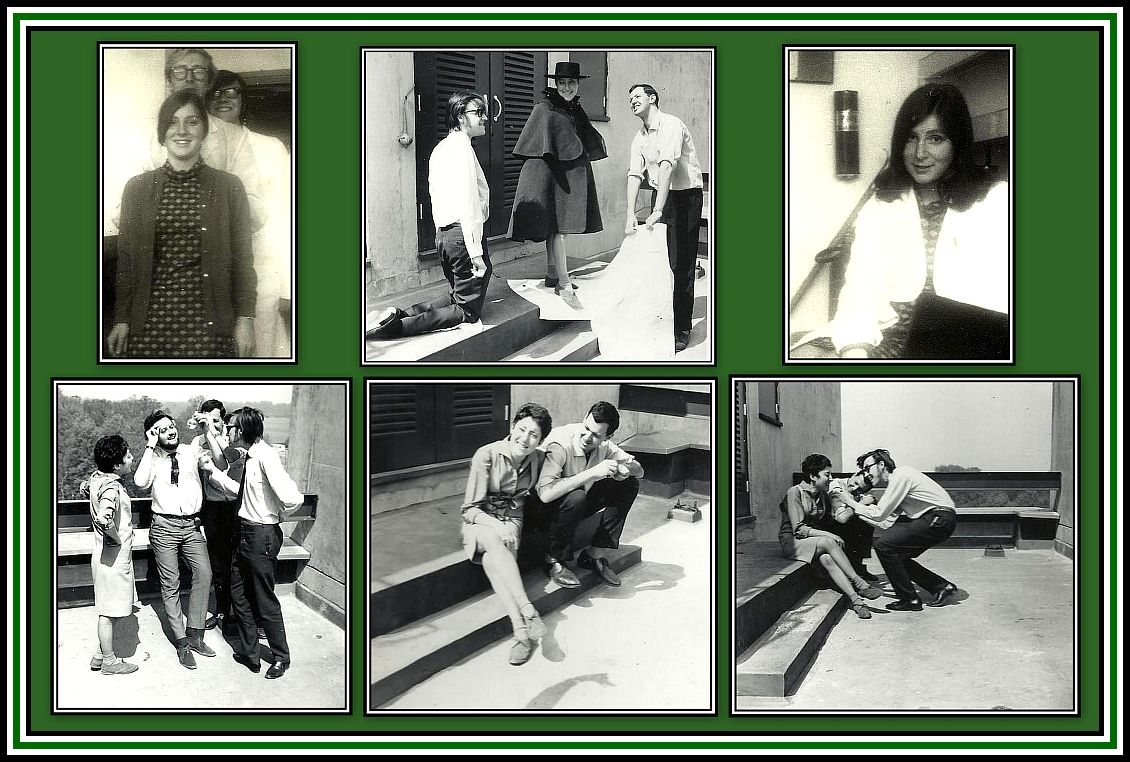 Fellow Participants of The Feasts seen here on the Roof where these Events took place
Fellow Participants of The Feasts seen here on the Roof where these Events took place
-oOo-
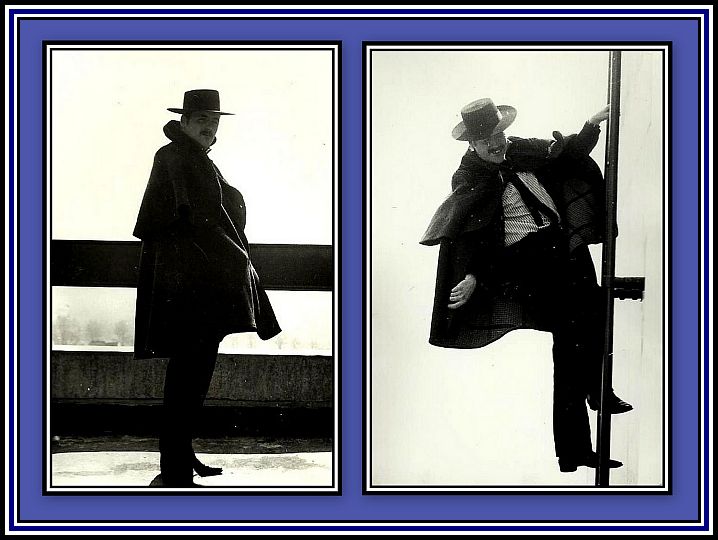 Me pretending to be Zorro on the Roof
Me pretending to be Zorro on the Roof
-oOo-
An interesting point of note: it came to my attention recently that The Health & Safety Committee of UEA no longer allows anyone to work in this same Roof Lab. where we were sent and no longer allows anyone to visit the roof area either!
-oOo-
A Whiter Shade of Pale by Porcol Harem – An Anthem of the Era (Released 12th May, 1967)
By 1967, I had entered my second year at UEA . England had suddenly become a mass of colour during that glorious spring and summer ……. The Summer of Love. Clothes had become more colorful. Paper carrier bags were now designed with psychedelic logos and patterns. The woman’s Boutique, Biba in Kensington High Street, was now trend setting, and thanks to them and Mary Quant (1934), girls legs could be better seen.
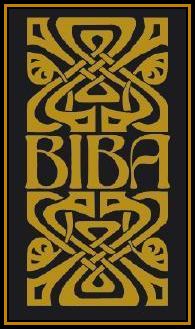
-oOo-

During that Summer of Love, talk of Peace and Love was everywhere. And in the middle of all this, we had The Beatles telling us that All we need is Love.
All You Need is Love
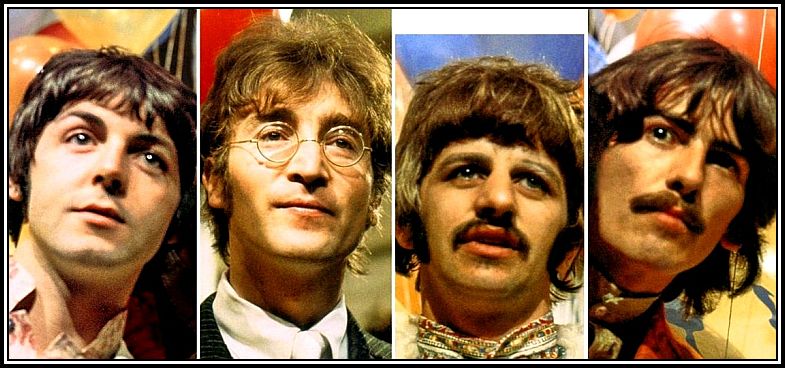
Click here to learn about the recording of All You Need is Love. It was recorded on 25th June, 1967 and produced for the BBC-TV production, Our World. This programme was a world-wide event which was beamed around the world via three satellites.
Click here to learn about how Our World came to fruition
Click here to view a shortened version of Our World from the Australian Broadcasting Corporation (ABC)
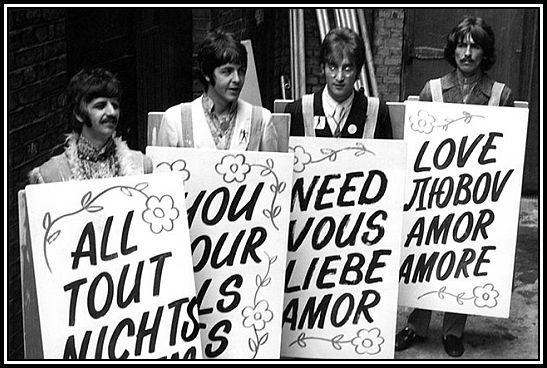
Click here to watch the making of The Beatles segment for Our World
-oOo-
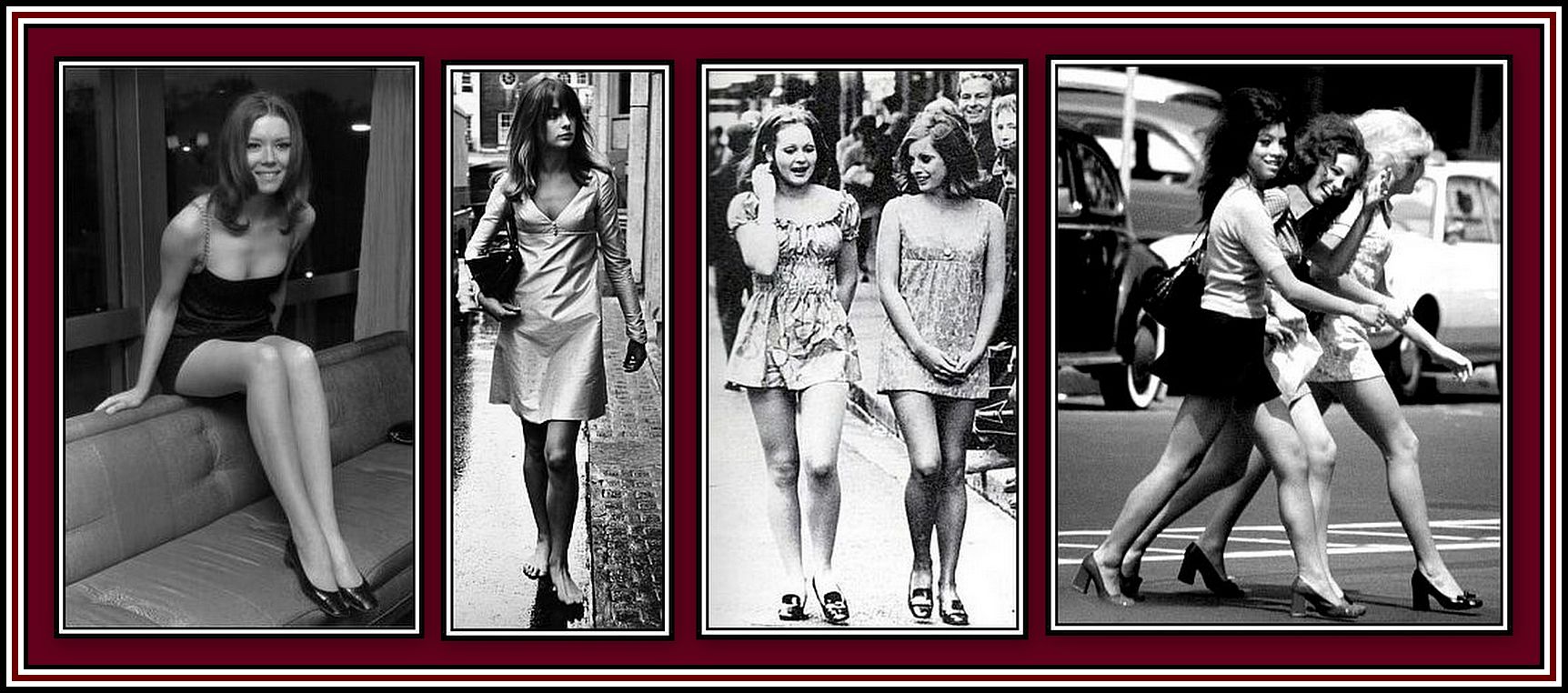
Suddenly, even Norwich seemed to be filled with glorious and gorgeous girls or Dolly Birds, as they were called at that time. It was overwhelming. Love, or rather sex, was in the air not to mention Drugs. Men and boys found it much, much easier to have their wicked way and now women and girls were much more willing to comply.
I remember going on a Saturday night at that time to a club which had recently opened in the centre of Norwich. The club was an early version of what was to become known as a Discothèque. Inside, the place was illuminated with bright Strobe Lighting which pulsed to the beat of the music. In addition, the light from Ultra-Violet lamps mounted around the club caused anything white to appear blue.

This was the first time that I had seen such a display of light, and in my somewhat stupourous condition, found it to be very compelling. The music was very loud and I remember hearing here, for the first time, The Beatles’ song, Baby You’re a Rich Man. I also remember having a very, very good time that evening.
Unfortunately I have been unable to find the original version of this tune.
When I do, I will upload it here.
-oOo-
Of course the so-called Sexual Revolution was not really anything new, and had in fact always been around for years, as exemplified throughout history and by each of my many, and stupid aunts, who after having fallen pregnant, rushed into matrimony at very very young ages only to spend miserable lives with men that they soon realised that they did not even like, let alone love!
-oOo-
Even UEA looked better in the warm bright spring and made my life alot more joyful. By this time, I had made some decisions regarding my career and had decided that my life as a pure chemist would end with the award of my Ph.D. I was more suited to Biochemistry and Medical Research. However, Chemistry was, and still is, a good foundation for such areas of research. Meanwhile, I toiled on, but the whole experience was not to my taste.
-oOo
Sadly, at the start of this glorious summer, I was still finding most of The Ten to be dullards with little sense of fun, however, as Bob Dylan (born 1941) said, The Times They Are a-Changing!
The Times They Are a-Changing
-oOo-
There was no music allowed in the laboratory at that time. It had been outlawed by the more senior members of the group. In addition, there was little conversion about anything other than Chemistry. Most of my colleagues never seemed to go to the cinema or listen to music or to have seen a play. They joked amongst themselves, but I rarely found anything that was said to be amusing. And naturally, they were not overly fond of me! However, I believed that if there was some music playing in the laboratory for some part of the day, we might be able to work better and perhaps get along better. I was determined to change the status quo and give music a chance!
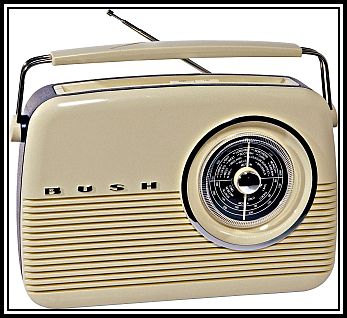
-oOo-
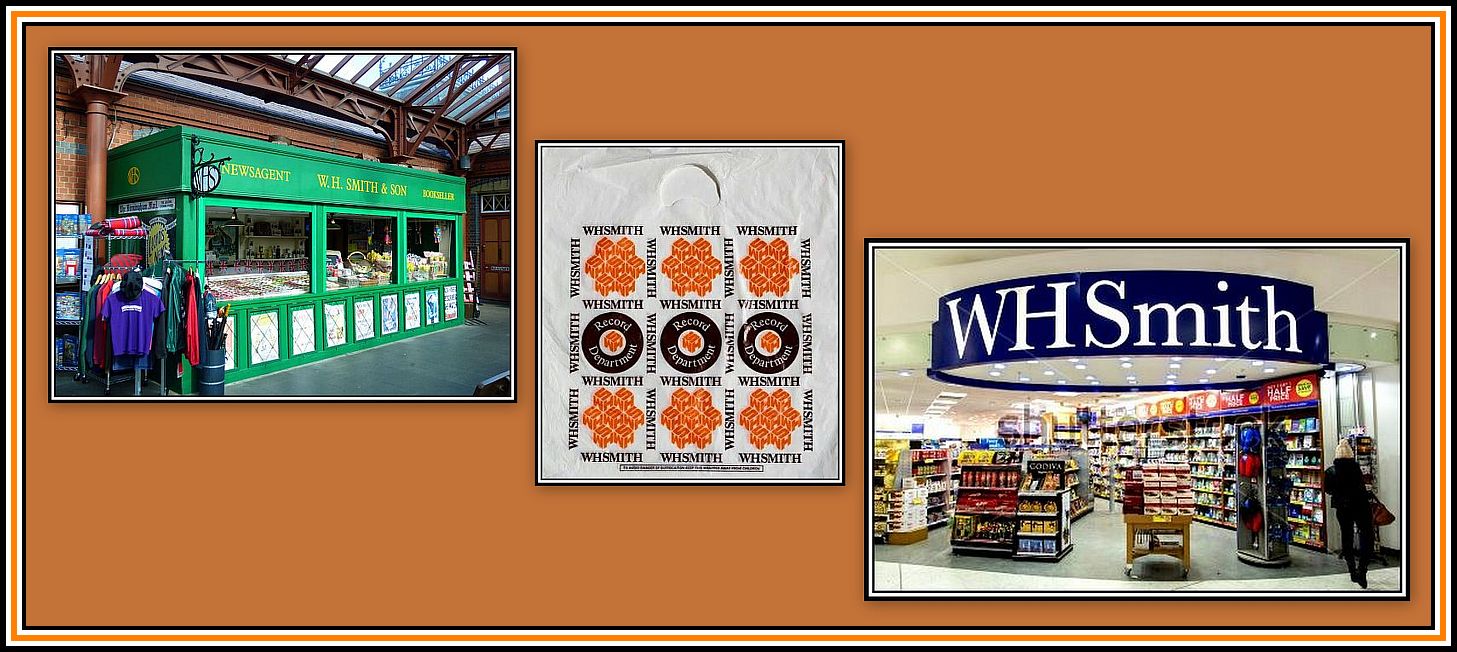 W.H. Smith’s Newsagents: Vintage (Left) & Now (Right) with Record Department Carrier Bag (Centre)
W.H. Smith’s Newsagents: Vintage (Left) & Now (Right) with Record Department Carrier Bag (Centre)
I recall taking the bus into Norwich on that late May day of 1967 and going to W.H. Smith’s Newsagents, where there was a reasonably, for the time, large gramophone department. I think that I was either the first or second customer of the day and definitely the first to ask for the latest Beatle album/record. I did not bother to listen to it in one of the cubicles available for potential buyers to decide or not to buy something. I knew that I wanted it and now could have it! I paid my money, which represented a large amount of the weekly budget, for although we were paid a sum to study, inflation had reared its ugly head, and the stipend, as they called it, had shrunk and would shrink more. Still, some things are more important than food and beer.
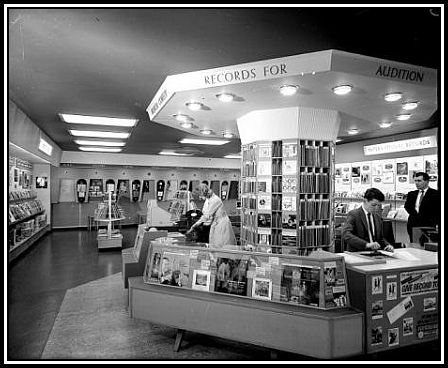 W.H. Smith’s Gramophone Department
W.H. Smith’s Gramophone Department
I rushed out of the store and walked to my little room that I rented in the center of the town, also on the top floor, but this time without a lift. I had bought a second-hand and very cheap ‘record player, and after collecting it, took the bus up to the University. I was determined to listen to the new Beatles album in the laboratory and hopefully drown out the more grumpy members of The Ten with music!
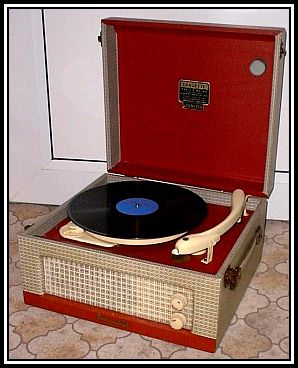 Portable Dansette ‘Record Player
Portable Dansette ‘Record Player
-oOo-
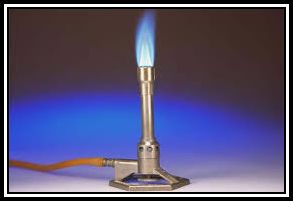 A Bunsen Burner invented by Robert Bunsen (1811-1899)
A Bunsen Burner invented by Robert Bunsen (1811-1899)
Once I got back to the laboratory, I was greeted by the usual idiot remarks of the older and more devout Chemists. I was too excited to bother with stinging sarcasm, which always sent these folks running back to their flasks and Bunsen Burners since they totally lacked repartee and wit. I was too busy setting up my record player to bother with them.
-oOo-
In my preparation for the writing of this piece, I was surprised to find that The Beatles’ Apple Records was not formed until 1968 and is a division of Apple Corps Ltd. If this is so, and I have no cause not to believe it, then Sgt. Pepper’s Lonely Hearts Club Band could not have been initially released in May 1967 by Apple Records. It was released by Parlophone Records, a subsidiary of Electric and Musical Industries (EMI), which had released all of The Beatles recordings at that time.

Although I can not deny the facts, in my mind, the record that I bought at W.H. Smith’s was evidently seen by me as being released by Apple Records. Obviously, my imagination and recall have changed the label of the record in my memory to suit what I think makes for a better tale. I ask the purists to forgive me, but it may be wrong, but I am sticking with what my imagination has led me to believe!
-oOo-
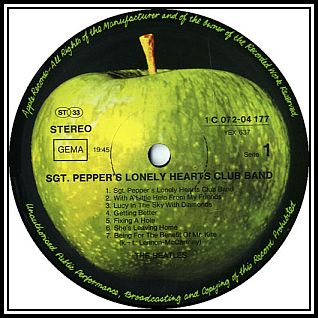 Side One
Side One
Once the ‘record player was plugged in, I took the ‘record out of the bland paper carrier (poor W.H. Smith’s hadn’t gone psychedelic as of yet!), took it out of its sleeve and laid Side One on the turntable. I gently pulled the arm of the ‘player back and the record began to spin at thirty-three and one-third revolutions per minute sending the picture of an apple round and round. I gently placed the stylus (or as it was still called then, the needle) onto the outer part of the record and waited.
Suddenly the laboratory was filled with the miraculous sounds of George Harrison (1943-2001) belting out the introduction to the first track that announced that we were to be treated to a concert given by Sgt. Pepper’s Lonely Hearts Club Band.
The First Track of Side One
I can never forget the spine-tingling sound that sent my ear Ossicles into vibration and pulsed it on its way to the Cochlea and then the brain! The effect of this sound was perhaps only equaled by my first encounters with The Crickets intro to That’ll be the Day and the guitar and echo of Heartbreak Hotel. This was truly classic stuff.
That’ll be the Day
Heartbreak Hotel
-oOo-
At the sound of the announcement by The Lonely Hearts Club Band, every member of The Ten came rushing into my area of the laboratory to see what was going on. I was too mesmerized by the music to notice or hear them at first. I was brought back to the reality of the setting by multiple ssshhhs around me. I looked about and everyone, even the most crusty and crabby members of the laboratory, was listening intently to the pulsating sound and, apparently, not finding it disagreeable!
I promise you that no one was more shocked than me to notice that The Ten stayed in place for the whole of the first side of the record! When it ended, no one spoke, and silence ruled briefly as I turned to the record over and started it revolving again, this time with the cut-side of the apple spinning on the turntable.
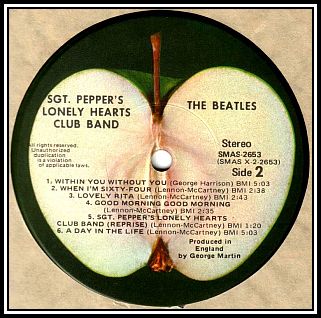
Again, my cohorts and I stood in silence and listened, and did so intently, as if it was music by Mozart or Beethoven. I remember especially the last track – A Day in the Life – I recall that some of my now-new-friends and I found the ending to be a bit powerful.
-oOo-
For those who do not know this piece, or for those who have forgotten it (although I cannot think of anyone not remembering it forever after once hearing it), the sound of the orchestra rises to a crescendo that can be deafening (depending on the level of the volume) and can cause some listeners to suddenly feel uncomfortable and believe that the sound is never going to end (I found the first time I heard it to be like a Bad Trip and wishing to bring an end to the Hallucination).
A Day in the Life
-oOo-

Once the record came to an end, we stood there in total silence for a minute or two. What was there to say after hearing this brilliant extravaganza? Eventually someone said something like Wow or Goodness Me and then everyone began to talk at once! I remember hearing mention of Henry the Horse, who of course danced the waltz, and Mr. Kite etc etc etc. who were both mentioned in the song, Being For the Benefit of Mr. Kyte.
Being For the Benefit of Mr. Kyte
-oOo-
I was urged to play the album again, and this I did, in fact the album was played again and again that day. No one seemed to tire of it. I think that some work was done on that memorable day, but perhaps not much. What the album did do however, in addition to giving us immense pleasure, was to unite and bring us …. The Ten and me …. together …. a little. I cannot say that any of The Ten and I became friends for life, but we were no longer cold in our greetings and conversations were held between us that were of a more genial nature, which causes me to remember them with some warmth.
With a Little Help from My Friends
-oOo-
And with the ice having been broken, a radio was always found in the Roof Top Laboratory and tuned to a station playing some type of music.
-oOo-

One last thing about the album: when I finally got it home, I looked at the back of the album cover. Apparently this was the first album to publish the lyrics of the songs contained in the album. While reading the lyrics printed there, I found that the figures of The Beatles, dressed in brightly colored band-cum-pirate uniforms, began to flicker and pulse. This was very exciting to see.
Sadly, this effect was only noticeable on that one occasion and could never be repeated. Several years later, I remember going to an exhibition of a collection of paintings by Claude Monet (1840-1926) at the Château de Malmaison where the Empress Joséphine de Beauharnais (1763-1814) had once lived.
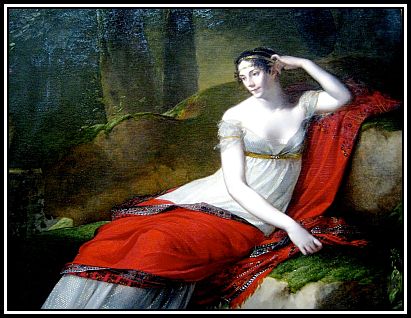
The Empress Joséphine painted in 1805 by Pierre Paul Prud’hon (1758-1823)
As I descended the huge spiral staircase to the main exhibition, I noted that the area was dimly lit. As my eyes adjusted to the lack of light, I began to notice explosions of colour coming from a number of the two hundred and fifty paintings of the Water Lilies in the garden of his home in Giverny. I cannot recall which color appeared first, but I do remember experiencing the pulsating reds and blues and greens and yellows, one after the other. It was breathtaking and like a collection of fireworks going off, but only much, much more spectacular!
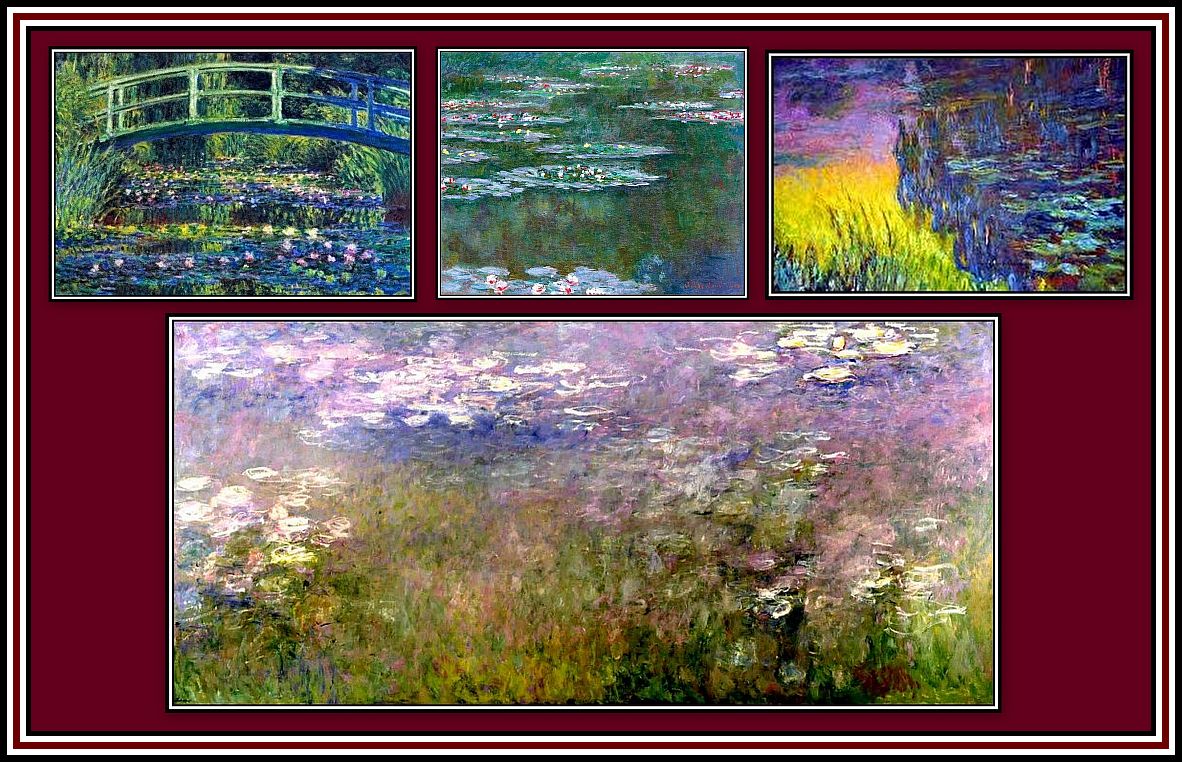 Some Examples of Monet’s paintings of Water Lilies
Some Examples of Monet’s paintings of Water Lilies
Once my eyes had fully acclimatised to the scene, I saw all the paintings as they were. I was amazed at what I had experienced and immediately rushed up the staircase to the entrance where the sunlight was beaming into the foyer. Once I had acclimatised myself to this sunlight, I rushed back downstairs, but alas, I was unable to re-create that amazing vision experienced earlier.
Lucy in The Sky with Diamonds
It would appear that the brain is wired to only allow you to experience such amazing sights, and perhaps sounds too, for the first time only once. However, once such a sight or a sound IS experienced, it can never be forgotten – just like listening to Sgt. Pepper, right?
-oOo-
As a point of interest, the cover of the album, Sgt. Pepper’s Lonely Hearts Club Band, was created by husband and wife team, Jann Haworth (born 1942) and Peter Blake (born 1932). They had been suggested to The Beatles by art dealer, Robert Fraser (1937-1986) for the task and for their efforts, they were awarded the Grammy Award for Best Album Cover, Graphic Arts (1967).
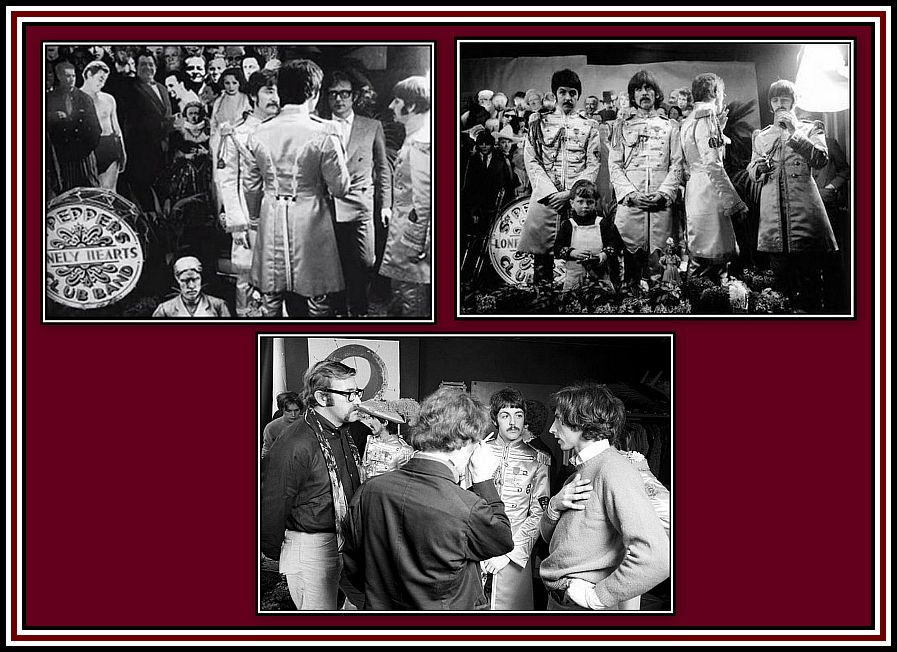 Preparing & Photographing The Album Cover
Preparing & Photographing The Album Cover
The idea of the cover was Paul McCartney (born 1942), but those appearing were contributions made from each of The Beatles. Apparently, letters had to be sent to all members appearing in the group before they could be added. Mae West (1893-1980) refused her permission at first, but after receiving letters from each of The Beatles, relented and gave her permission. Once cardboard replicas of all the members of the group were in in place, the assembly was photographed by Michael Cooper (1941-1973).
-oOo-
A list of the images appearing on the cover may be found by clicking on the following link:
-oOo-
Reprise
-oOo-
The release of the album, Sgt. Pepper’s Lonely Hearts Club Band, is now fifty years ago. It is hard to believe that so much time has passed. However, upon reflection, and with after thinking about what has happened in the intervening years to me, my friends and to the world we live in, it is easy to see where the time went. I expect that most of The Ten have retired now and perhaps some have even passed away. Whatever happened to them, I hope that they enjoyed their lives.
When I’m Sixty-Four
Listening again to the album here and recalling the events of the time, I was able to remember what it was like to be young in that glorious summer of 1967. Although my musical tastes have widened into other genres since then, I can honestly say that this album is still as terrific to hear and to enjoy as it was in during those Halcion Days. Here’s to the future!
-oOo-
—oooOooo—

The following comment came from Mr. Geoffrey Hunt:
I remember the day the album was released. At the time, I was working as a printer at Graviners in the Poyle Trading Estate in Colnbrook.
I was listening to the Pirate Radio Station, Radio London, who began playing it right the way through immediately it arrived and continued to do so for the rest of the day.
Up until then, my younger brother was The Beatles fan – I was more a Bo Diddley/Stones/Animals/Yardbirds fan – however, with the release of the album, Revolver, my brother was turned off them. Contrary to him, once I heard Strawberry Fields on the radio, its impact was such that I can only compare it to hearing Heartbreak Hotel for the first time in 1956 or Little Red Rooster. Having heard it, I had to go to the Slough Record Centre and buy it and then play it at home again and again.
With the release of Sgt. Pepper’s Lonely Hearts Club Band, I rushed to Slough to get a copy of the album. I could not wait to get back to Langley, where I was living at the time, to listen to it and so I went to my sister’s home in Slough. I remember that we enjoyed listening the album. I remember especially the end of the last track, where there is a ‘run off’, which we tried to decipher. I recall hearing ‘there will never be another ……‘ and a sound supposed to annoy dogs!!! I was amused to see that the run off was retained when the CD was released.
I was told that the British Mono Release of the album was much better than the American Stereo Release, as many of the special effects were lost on the American Release. Although I have not listened to the latest release of the album, I am told that the issue was remastered from the British Mono with added stereo effects.
The latest issue of the album includes a bonus disc, which was interesting. I have heard it before on The Beatles Anthology and on You Tube.
Eventually, the British Government won its battle with off-shore Pirate Radio Stations and they were forced to cease emission. On the day Radio London closed down, the very last track played was A Day in the Life. This was a fitting end to the era of the Pirate Radio Station. As the sound faded, it felt like the ship had finally sunk. I remember it being both sad and moving.
Even today, the song retains its impact. This comes not only from the song itself, but also from Lennon’s singing of it.
Memories
Photos of the University does show how uninspiring the architecture is. I have found your time at University interesting. More so as I attended my grandson Graduation Day at the self same University.
You have brought back memories of the heady exciting days when Britain led the world in music and fashion. We too, used to enjoy listening to the Pirate Radio Stations. After these were closed down – is that when the country started to go down hill?
Thanks for the memories,
Irene
Thank you so much for writing the article on the Beatles and your introduction to them and the time! Those were indeed the days – nothing equivalent since. Being a church-mousey person at the time, my introduction was nothing as revolutionary as yours ( and only in Sydney, not in London!), but the music and the genre grew on me over a few years as I gradually extricated myself from churchiness. The Ten sound dreadful – and the laboratory equally so. No wonder the Beatles met with such enthusiasm – I suppose much of the world was like The Ten before the Beatles.
I very much enjoyed this story. I loved reading about the past of your university along with old pictures and insight to your fellow classmates at the time. The Beatles are legendary to time and I can’t see how someone dislikes the Beatles. Times when you attended the university will never be the same.
Glad you enjoyed the story.